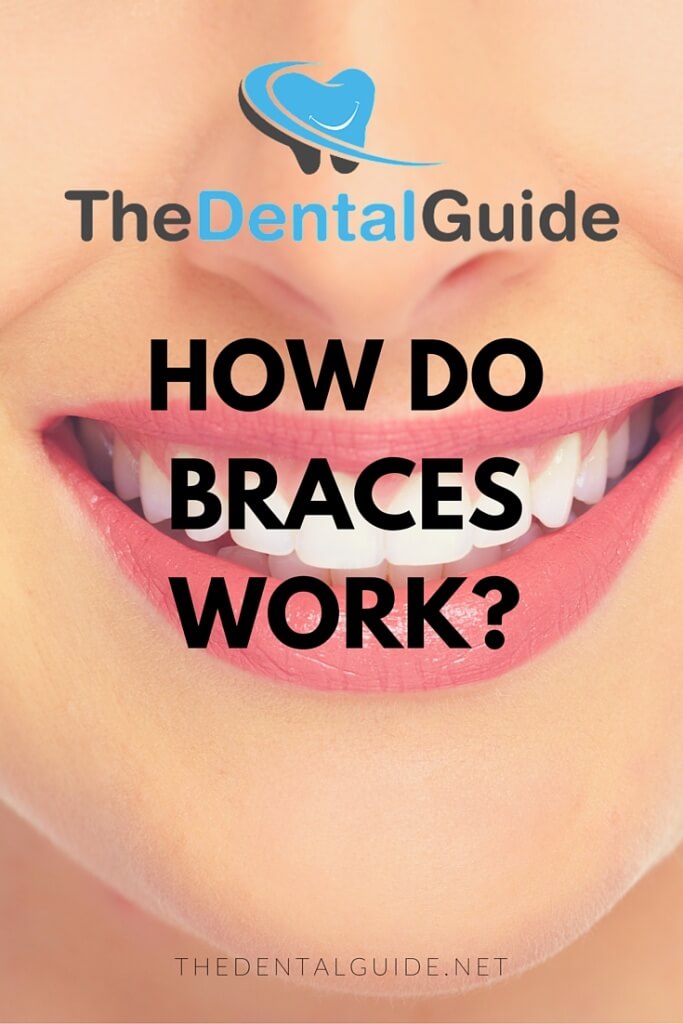Before you decide to ask your dentist about wearing braces you’re probably wondering how do braces work? Braces work at any stage in life and can be worn at any age to improve the appearance of your teeth and your smile.
Not everyone’s born with perfectly straight teeth and braces are an efficient way to correct problems to give you the result you want. Only a professional dentist can advise, supply, fit and manage the process of wearing braces, as it’s a very precise and expert field.
Understand the Process
It’s important to understand how braces work before starting your treatment. Braces work by gradually and slowly encouraging your teeth to move to a straight and balanced position. as part of a controlled and planned procedure.
Orthodontic procedures move teeth by careful manipulation of force to guide teeth into their new position. Light but constant pressure is applied to the teeth. This allows them to move in a predictable pattern involving changes to both bone and ligament in the mouth region.
Time Scale for Treatment
The minimum time period is usually about 6 months of wearing braces for the desired movement to take place. However, if your teeth are more severely crooked, it could take longer for the braces to work, as the planning stages need to take into account slow, gradual movement for a healthy result. In some cases, you’ll need to wear braces to up to 3 years, but this is usually the upper limit for more extreme cases.
Decide Which Method’s Right for You
Before you start the process of wearing braces, your dentist will offer you a consultation and advise on the whole process from start to finish, including the type of treatment available and best suited to you. There are different types of braces available, from fixed to removable, clear/transparent to metal.
All types have particular characteristics and benefits and the prices may vary too, so it’s best to consult your dentist on the full range of options before deciding on any one course of treatment.
The First Stage
After the initial consultation, if you decide to go ahead, the planning phase will start and this is usually just one appointment to measure you up for the braces. During the first appointment, your dentist will take x-rays and photographs of your teeth. Sometimes, additional procedures may be required before you start wearing your braces, such as tooth extraction to make room for the remaining teeth to move.
Your dentist will also take a mould of your teeth, both upper and lower sets, at the start of the process. This is critical as it’s used to plan each stage of the brace-wearing process, with the aid of a computer programme that plans and maps the changes. Once your dentist receives the computerised ‘plan’ for your teeth, together with the braces from their supplier, it’s then time to fit your braces.
The initial fitting will vary depending on the type of braces you’ve chosen. All braces require some bonding onto your teeth which secures the attachments. The attachments can be in the form of wires, both top and bottom, or can be the type known as ‘aligners’ which are specially fitted strong plastic trays that clip in (and can be taken out e.g for eating). All braces map the shape of your teeth and put pressure on them very gradually so they move into the desired place.
After the First Fitting
All braces will feel tight when they’re first fitted. This is because they’re gently putting your teeth under continuous pressure, which is encouraging the teeth to move to their new, carefully-planned position. Usually after the braces have been fitted, the tight feeling will last for several days. This may be accompanied by some tenderness to your teeth, which is completely normal because they’re moving. After this initial short period of a few days, things will start to feel more comfortable and the tight feeling will reduce as the teeth start to re-establish their new position.
Steps Along the Way
Your dentist will leave the braces on your teeth for about 4 weeks and then call you back in for them to be adjusted. If you’re wearing aligners, a new set of aligners will be issued and fitted for you each time you visit. If you’re wearing wire braces, new fixtures and wires will be used every time. Each wire has a memory, which means that it holds onto its shape so your teeth move as planned.
For aligners, each set has slight changes built into the design, which gradually encourages your teeth to move to fit the new shape of the aligner, at which point, after 4 weeks or so, new aligners are supplied and so on, until the process is complete.
When the Treatment’s Finished
The whole brace-wearing process will continue until the end of your treatment, which will have been carefully planned to stop at a certain date. By this time your teeth will have moved into the desired place at a pace that’s been manageable and healthy. When you’re finally relieved of your braces at the end of your treatment the results will be wonderful.
It’s encouraging to know that at any stage of life, radical changes and improvements can be made to your teeth, as well as little corrections to give you the smile you’ve always wanted. Since teeth can start to move after just 48 hours, once your braces have been removed you’ll be offered alternatives for keeping them in the desired place, so all the hard work’s not lost.
It’s really important to continuously follow the advice your dentist will give you after your braces have been removed to keep your teeth in place and looking great for the rest of your life.
